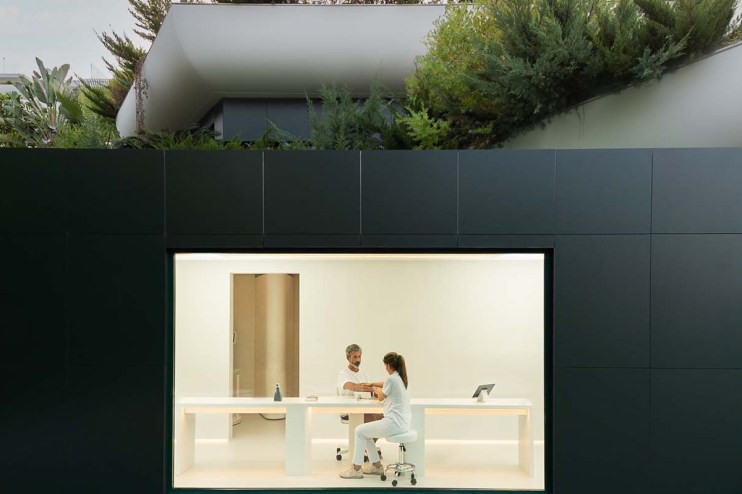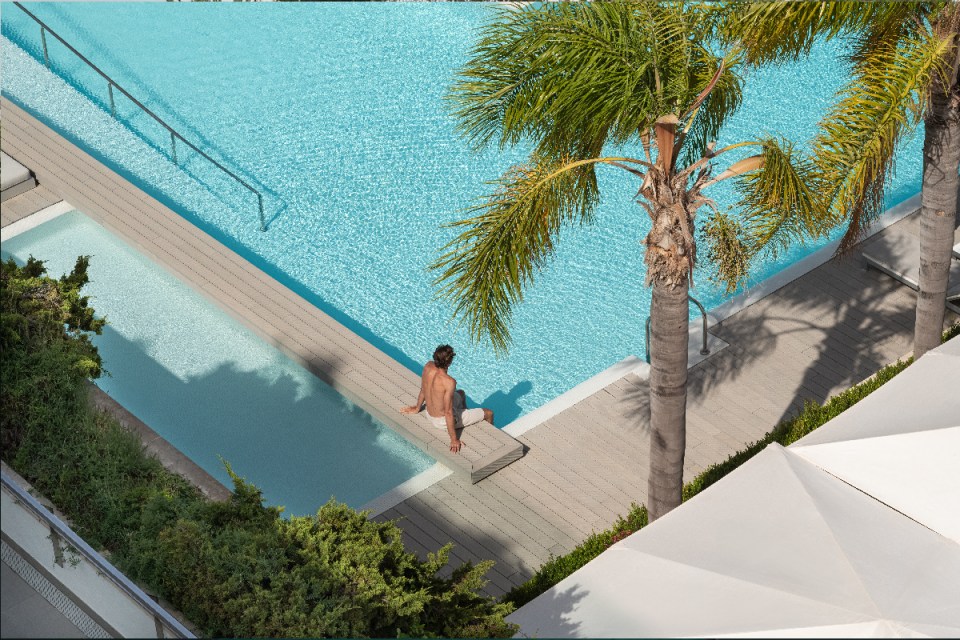Inside the SHA Wellness retreat, the world’s most high-tech spa resort

With private heli-pads, NASA-backed technologies and high-powered guests, does SHA Wellness retreat’s brain spa deliver what it promises? Lizzie Pook finds out.
I’m sitting in a darkened cinema room surrounded by empty seats. It is quiet. A thick bead of condensation inches down the carton of ionizing mineral water at my elbow. I pick it up, take a slow sip and blink, focusing on the huge screen in front of me. Emblazoned metres-high in purple, red and yellow, are my very own brainwaves. Above them, like a heartrate monitor, looms a jagged graph of all the electrical activity taking place within my skull.
This is a normal Tuesday at SHA Wellness Clinic’s high-fangled brain-training unit. The famed medical spa – set in the foothills of the Sierra Helada mountains in southern Spain – has been drawing in billion-dollar business owners for decades, detoxing them with colonic hoses, acupuncture needles and cactus-studded mountain views.
But it’s SHA’s cognitive performance technologies that are currently setting it apart from other high-end medical spas. Their ‘brain boot camp’ offers two pioneering (and somewhat controversial) treatments. You won’t find Transcranial Current Stimulation – used by Navy SEALs to whittle their brains into elite condition – and Brain Photobiomodulation, a treatment NASA originally developed for its sunlight-starved astronauts, on many other spa menus around the world.
You won’t find Transcranial Current Stimulation – used by Navy SEALs to whittle their brains into elite condition – and Brain Photobiomodulation, a treatment developed by NASA, on many other spa menus
The unit is aimed at those suffering from mild memory loss, executives who want to ‘stay in the zone’ and guests who simply want to enhance their brain function. The four to 28 day retreats blend the comfort of a luxury bells-and-whistles spa with neurological assessments, a brain-boosting detox menu, and intensive cognitive rehab. It’s all incredibly sci-fi, but for now, I’m being eased into things with a glimpse at what exactly is going on inside my head.
“Here, we can see your brain is in complete overdrive.” Buttoned up in a stiff white coat and spectacles, Dr Bruno Ribeiro do Couto gestures to the squiggles on the screen. “You are clearly more relaxed when you are busy but these gamma waves,” he points to a big block of orange twitching spasmodically, “they suggest to me that you are someone who suffers from a very busy brain, and compulsive, sometimes intrusive, thoughts.” I swallow and adjust the Velcro strap around my forehead.
He’s got me pegged. This guy deals with elite brains on a daily basis – studying the grey matter of Olympic athletes, billionaires and those who have suffered catastrophic brain injuries. So of course it only took him minutes to establish what’s going on in my humble noggin. Because the truth is, not only do I suffer from crippling brain fog on a daily basis (something that afflicts large swathes of the post-Covid working population) but my anxiety levels are also debilitatingly, distractingly high. It’s something of a hornets’ nest up there. You really don’t want to be poking it.

“Do you ever feel like you have so much energy you can read other people’s minds?” Professor Ribeiro asks me later in his office. I almost recoil at the proposition. It’s not the mind-reading that has me alarmed; but the conceit of having such endless amounts of energy that there might possibly be a spare modicum to go around. He takes my medical history and I disclose a couple of degenerative brain conditions that run in my family. He clicks his tongue softly against the roof of his mouth. “I want to run some tests.”
He challenges me to a series of quick on-screen exercises crafted to assess reaction times, attention span and long-term recollection. Circles illuminate, which I have to tap quickly. Numbers flash across the screen and I have to identify sequences and patterns. I get 100 per cent on all of them. Easy. I start to wonder if I’ve wasted a plane ticket. However. The final test interrogates my brain’s working memory and I stumble straight away.
Six boxes open and close to reveal icons; I must identify each matching pair. Oof. I am not good at it. After an embarrassing few minutes, Dr Ribeiro taps away at his keyboard and the computer spits out my results. I scored 20 per cent. “That’s interesting for a person of your age.” He raises an eyebrow. “This is something I’d normally see from someone whose brain is exceptionally tired and stressed. You need much more time than the average person to take in anything new. Your working memory is shot. You’re not at burnout yet. But you’re close.”
And so I am sent off for further investigations. On my second day, a ‘bio-energy therapist’ takes a reading of the electrical impulses in my body using something that looks a lot like a biro. She leans back in her chair and tuts. “Jeez. Hyper, much?” Later, I visit the on-site medical specialist to tell her about my chronic lack of energy. She orders me to lie down on the table and starts prodding my stomach. “Exactly as I thought,” she says. “Your gut is imbalanced. It is swollen and tender and will be having a major impact on what is happening in your head.”

Ultimately, I am prescribed a ‘holistic’ approach to tackling my brain fatigue and reducing high levels of inflammation in my body. Over the next few days, I’m massaged, buffed, stuck with acupuncture needles and wrapped in cosseting seaweed compresses. I do all the things that would usually dwindle to the bottom of my priority list back home. I take yoga and cooking classes. I swim every day. I even spend 10 minutes every morning stretching.
And honesty, all of this ‘self-care’ feels just as beneficial as the high-tech brain training stuff. It’s as if simply taking a break can work wonders; who knew? I do try the Transcranial Current Stimulation though – a low intensity electrical current is delivered to my prefrontal cortex via a rubber cap fitted with electrodes. I am nervous at the thought of my brain being ‘changed’ but, actually, it feels like little more than an itch on the scalp, and I do emerge from it feeling like my brain fog has lifted.
In the end, I feel well. Exceptionally well, in fact. I emerge from the shiny doors of SHA energised yet calm; focused, motivated and thinking clearly for once. But… after a day back at my computer the fog soon sets back in and it takes just a few hours for me to feel like my working memory is back wallowing in the lower echelons.
It turns out keeping my brain in ‘elite’ condition while I have a life to live, family to worry about, and work to occupy my (many anxious) thoughts is a tall order. But I do feel like I now have the tools to give it a boost now and again: supplements, mindfulness, regular swimming sessions at my local pool, and (if I ever make it to CEO status) Dr Ribeiro on speed dial.
• Starting rates for a wellness retreat Deluxe Suite at SHA Wellness Clinic are from €400. A four-day Rebalance and Energise Programme starts from €2,300 per person. Visit the website here.